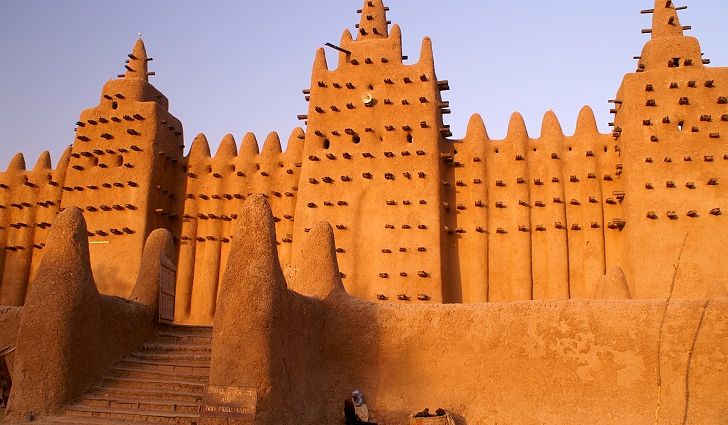The Unique Mosque in the City of Timbuktu-Mali is the Proof of Civilization Architecture and Islam in Western Africa
Timbuktu City is one of the cities in the country of Mali, western Africa. This city is the center of the spread of Islam in Africa in the 15th century and the 16th century. The city is populated by Songhai, Tuareg, Fulani, and Moor tribes. The city is often said to be located on the River Niger, but is actually located 15 km north of the river. The city is also located at the crossroads of the Trans-Saharan Trade, from west to east, north to south. The city which in ancient times and now, is a place of salt distribution from Taoudenni.
One proof, Timbuktu city awarded from Unesco is Djingareyber Mosque. This mosque is a mosque built in the time of Sultan Kankan Moussa in 1327 after returning from pilgrimage to Mecca, then between 1570 and 1583, the qadhi of Timbuktu, Imam Al Aqib, extended it. The mosque is one of the three largest mosques in the city of Timbuktu, and is a famous center of study in Mali.
Construction of the Djingarei mosque built of mud and wooden bricks is a typical Sudano-Sahel architecture. Apart from limestone, the entire building of the mosque is made of soil and organic materials such as fibers, straw and wood. The mosque has three fields, two minarets and 25 interlocking pillars to the east and west, and a prayer room that can accommodate 2,000 worshipers.
The Sankore Mosque was built in the early 15th century AD at the end of the triumph of the Kingdom of Mali. In this mosque used to be a center of religious studies in Timbuktu. The shape is unique to this mosque around the world. The Sankore Mosque was built at the end of the glory of Mali, in the 15th century AD. History is called, Sankore Mosque is a center of teaching and study of religious knowledge. Its form is sand sand which makes it famous all over the world.
At the start of its construction, the Mali empire gained direct control over Timbuktu City. In 1324 during the reign of Mansa Emperor Musa Kankou, Sankore Mosque was designed to be the first great mosque and then followed by the construction of the Djinguereber Mosque the next three years. Laying the first stone was preceded by the orders of the chief judge of the city, Al-Qadi Aqib bin Mahmud bin Umar. At first, Sankore was only used as a mosque. But a local woman, Madinka, with her fortune turned Sankore into a world-class teaching institution with a professor equivalent to outside Africa. The mosque which is now the center of world-class education is designed in such a way that the dimensions of the building right facing the Kaaba in Mecca.


